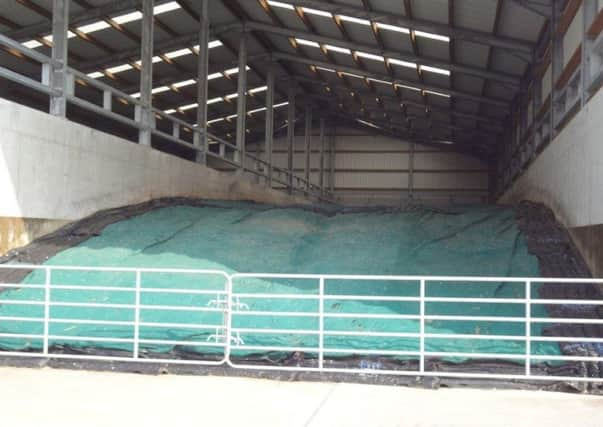DAERA Management Notes: Dairying


Short spells of good weather in early May and late June/early July generally provided good conditions for first and second cut silage making. However throughout June and mid-August to mid-September high rainfall caused problems for silage making and grazing cows, especially in the west of the province.
Due to the prolonged periods of wet weather, particularly in late summer, many herds were housed at night and occasionally full time. As a result many of you, particularly in the west, will not have enough silage for the winter feeding period. It is therefore important if you have not already done so to calculate forage requirements for your farm.
Silage supplies and requirements
Advertisement
Hide AdAdvertisement
Hide AdUse tables 1 and 2 to estimate the tonnage of silage available and compare this with your likely winter demand. For example, the volume of silage in the pictured pit is calculated by multiplying the length of the pit (38m) by the width (10m) by the height (3m). This equals 1140 cubic metres. Then use the information in table 1 to convert the volume of silage to tonnes of silage.
Assuming the dry matter of silage in our example is 25% multiply the volume by 0.68. 1140 cubic metres x 0.68 = 775 tonnes of fresh silage.
To estimate the demand for silage multiply the number of each class of stock by the number of months to be fed. For example, 80 in milk cows fed silage for seven months require 784 tonnes (80 x 7 x 1.4).
What are the options if you have a silage shortfall?
The priority is to feed the best quality silage to early lactation/ high yielding cows, then consider the following options:
* Cull barren, poor performing or problem cows.
* Source suitable silage supplies for young/dry stock.
* Feed young stock a straw/concentrate diet.
* If available, use alternative feeds.
Silage quality on farm
Advertisement
Hide AdAdvertisement
Hide AdDue to variable weather conditions, cutting dates etc. throughout the 2017 grass growing season there will be a variation in silage quality. Get your silage analysed to know its potential feed value (M+). This allows you to decide the level of concentrate feeding needed on your farm at each stage of production.
October jobs checklist
* Prepare/repair housing before winter.
* Identify cows to dry off in the next two months and assess body condition. Now is the ideal time to improve body condition by feeding additional concentrates to cows with a body condition score of less than 3.
* Carry out any vaccinations, for example BVD due well in advance of the breeding season.
* Analyse silage in preparation for planning the winter diet.
* Change time clocks at the end of the month when the hour changes.
* The last day for spreading slurry is 15th October. Try to ensure tanks are empty for the forthcoming housed period.